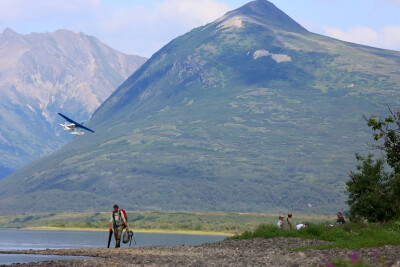AUKE BAY, Alaska —The Alaska Marine Stewardship Foundation announced that it has received $210,000 to restore critical habitat from the NOAA's Restoration Center and Marine Debris Program.
“We are extremely pleased to be able to accept this award,” said AMSF Director Dave Gaudet. “This allows us to further pursue our mission to promote environmental stewardship of Alaska and North Pacific marine resources through habitat restoration and education.”
Specifically, the award will allow AMSF to conduct marine debris cleanups in the vicinity of five communities in the Bering Sea: Port Heiden, Nelson Lagoon, Nikolski, St. George and Savoonga. All of these areas have important marine life communities nearby and are heavily affected by marine debris.
Gaudet noted that, “Removing marine debris from these areas will reduce the risk of negative impacts on marine animal communities.”
The cleanups are expected to begin this fall and all of the work should be completed by the spring of 2015. AMSF plans to remove approximately 55 metric tons of nets, lines, buoys, and other plastic debris. In addition, AMSF will also submit a white paper exploring ideas for an effective removal and recycling program of debris from the Bering Sea communities.
“Marine debris isn’t just trash on our shores—it can trap wildlife, damage habitat, and even get tangled in propellers,” said Nancy Wallace, director of the NOAA Marine Debris Program. “NOAA supports locally driven marine debris removal projects that benefit coastal habitat, waterways, and wildlife including migratory fish.”
The award required a 1:1 match for funding. Three of the Bering Sea Community Development Quota groups—Bristol Bay Economic Development Corporation, Aleutian Pribilof Island Community Development Association and the Norton Sound Economic Development Corporation—provided funding for the match.
U.S. Senator Begich stated “Marine debris continues to be a slow rolling disaster that threatens our coasts which is why this grant is welcome news for our coastal communities in Alaska,” said Begich. “These funds will go a long way in cleaning up this underfunded mess that threatens our marine life and the health of our oceans. I hope NOAA continues to acknowledge the pressing nature of marine debris.”
Congressman Don Young commented that: “Marine debris cleanup is crucially important to the Alaskan economy and ecosystem. A historically underfunded issue, this award is a positive step toward protecting Alaska’s beaches and shores from marine debris.”
Finally, Senator Murkowski added: “Alaska has 44,500 miles of coastline, many of which are seeing a rise in debris related to the tsunami and seeking adequate resources to address this priority,” said Senator Lisa Murkowski. “This is not a cosmetic emergency, this is an environmental threat with short- and long-term impacts on our state. This news also serves as an important reminder that a federal interagency strategy is needed, as so much of our coastline is federally owned and there are several agencies and Departments that would bring a unique expertise to this effort.”
The NOAA Marine Debris Program leads national efforts to research, prevent, and reduce the impacts of marine debris. Its staff, which is positioned across the country, supports marine debris projects in partnership with state and local agencies, tribes, non-governmental organizations, academia, and industry. The program also spearheads national research efforts and works to change behavior in the public through outreach and education initiatives. For more information, visit www.marinedebris.noaa.gov.
Alaska’s Congressional Delegation, acutely aware of the importance of the oceans to Alaskans, responded positively.






